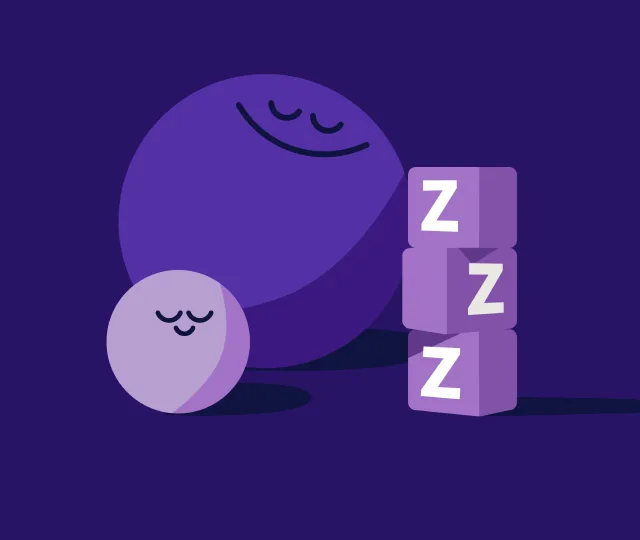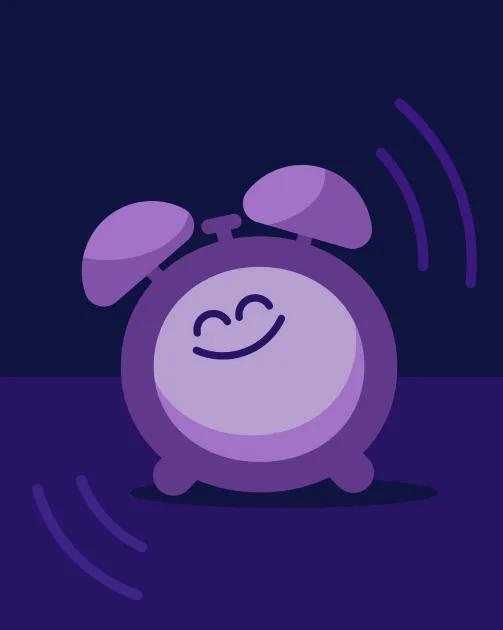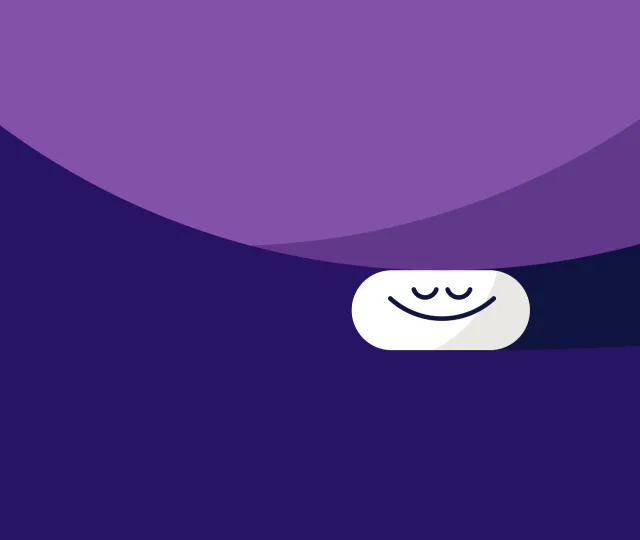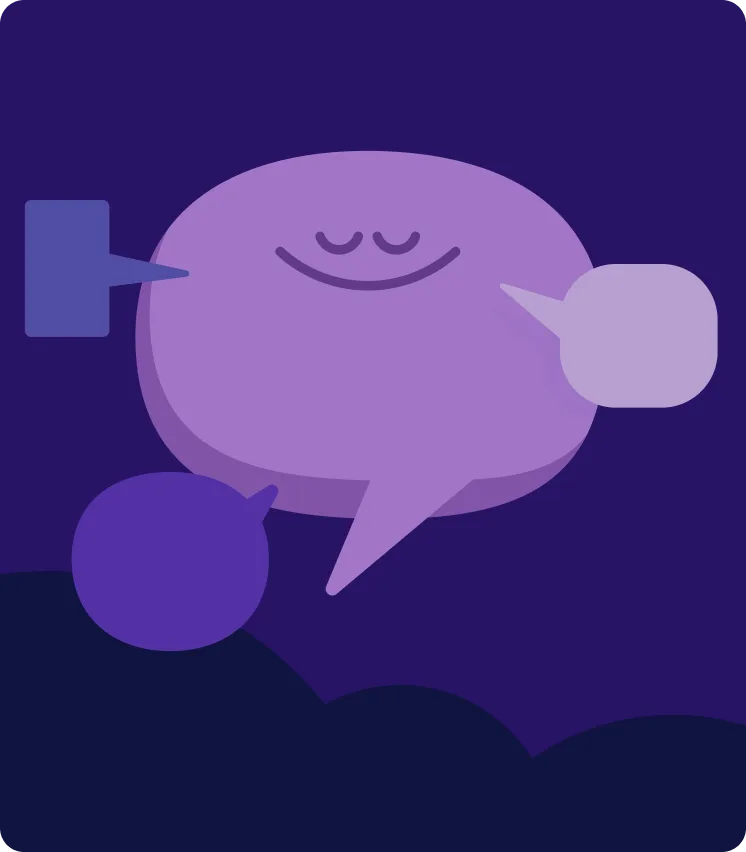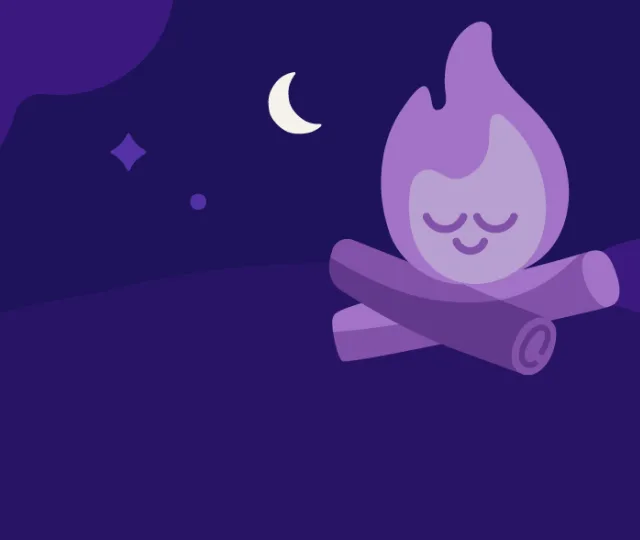Meditation for sleep: guided meditation at bedtime

Our Mindfulness and Meditation Experts

Healthy sleep has more to do with quality of rest than quantity of hours. Sleep meditations help create the inner conditions needed for a truly restful night. Because when we settle the mind, we rest the body — and that restfulness is what makes it easier to wind down and drift off.
In scientific terms, meditation helps lower the heart rate by igniting the parasympathetic nervous system and encouraging slower breathing, thereby increasing the prospect of a quality night’s sleep.
While working through a sleep-based guided meditation, you may discover new tools and techniques to help relax the body and mind and let go of the day, easing into restfulness.
In this article
Try a meditation for sleep
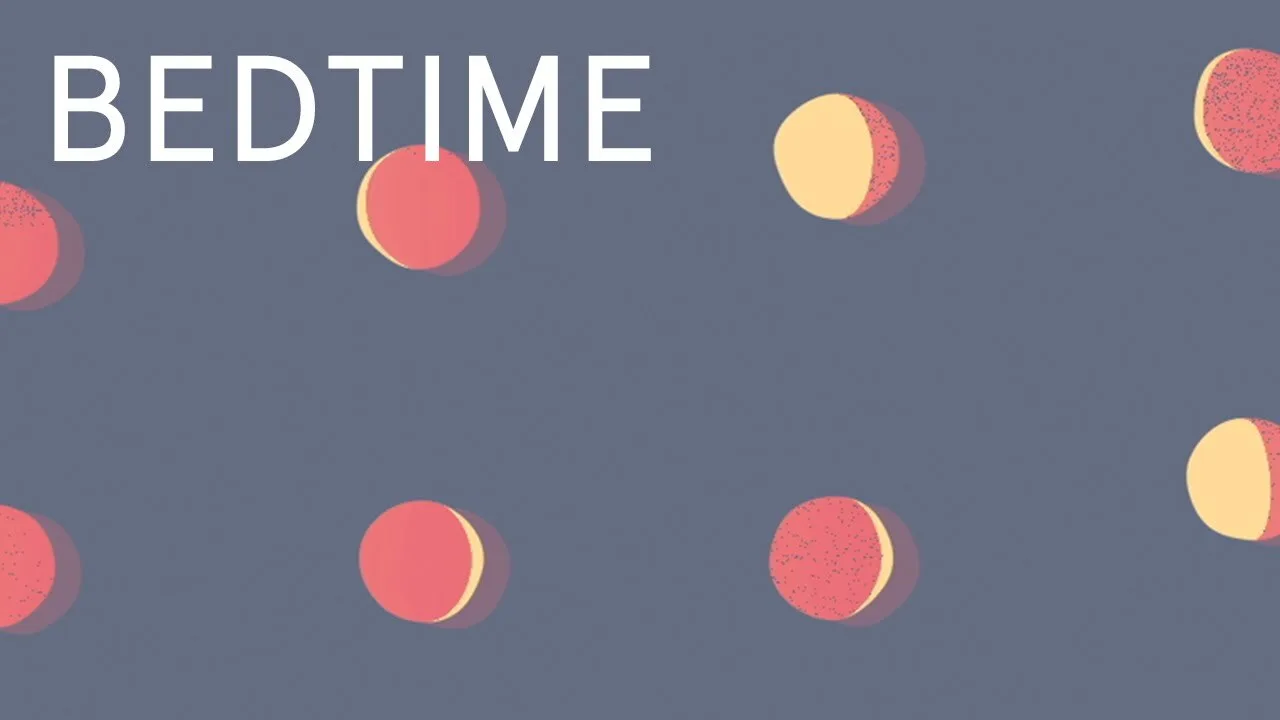
Watch Mini-Meditation: Get a Good Night’s Rest
1 min
What is meditation for sleep?
Meditation trains us to be less in our head and more aware of the present moment. The mind’s tendency to get caught up in thoughts is perhaps strongest at bedtime, when we suddenly stop and be still.
Meditation for sleep is a specific, guided experience that offers a natural sleep aid all on its own, allowing us to let go of the day—everything that’s happened and everything that’s been said — so that we can rest the mind while simultaneously resting the body.
The sleep deprivation epidemic
Sleep is as critical to our wellbeing as food, water or shelter. Yet, as a society, we don’t always treat it this way. Research shows that Americans lack proper sleep: Most adults function best when they sleep 7-9 hours per night, but over 40% of Americans sleep fewer than 7 hours nightly, according to a recent Gallup poll. 30% of people report difficulty falling and staying asleep at least a few times per month; 6% experience insomnia on a near-nightly basis. This problem has even birthed an entire industry: In 2014, people around the world spent $58 billion on sleep-aids, a figure projected to rise to $76.7 billion by 2019.
Some people feel pride or resilience in their ability to function well without sleep. We can see this reflected in phrases like “I’ll sleep when I’m dead” or “You snooze, you lose.” More recently, however, sleep has emerged in research and culture as an essential component of a healthy lifestyle.
Stay in the loop
Be the first to get updates on our latest content, special offers, and new features.

What keeps people up at night?
Almost half of us are sleep deprived — but not because we don’t want to sleep. Sometimes we simply can’t fall asleep or stay asleep due to a range of biological forces and lifestyle choices. You know how it goes: You put your head on the pillow and it appears as though the mind suddenly goes into overdrive. Of course, the thoughts have been there all along; it’s just that without any distractions, you become aware of them.
Technology has also contributed to increased sleep problems: 90% of Americans use technology during the hour before bed (this includes watching tv, using cell phones, playing video games, using computers, and more). Many of us even sleep with cell phones under our pillows or next to our faces with the ringer on. Unfortunately, mindless screen and technology use is negatively associated with solid sleep: one study showed that the more devices an individual uses in a given day, the more difficulty they may have falling and staying asleep. These effects were seen mostly in people who were highly engaged with their devices throughout the day, and even more so in those who went to sleep with their phone ringers turned on (even for use as an alarm clock) or other interruptive devices nearby.
The benefits of sleep meditation
Regularly sleeping fewer than seven hours per night increases the risk of developing heart disease, diabetes, unhealthy eating habits that can lead to other chronic illnesses. Sleep deprivation can cause impairments in short and long term memory), decision making), attention), and reaction time).
People who are sleep deprived also tend to make more errors at work and drive more dangerously on the road.
Increased and better sleep, on the other hand, can lower levels of stress, and improve mental clarity and memory. Improved sleep also affects our immune systems), encourages better eating habits and weight management.
Better sleep has even been linked to reducing the risk of Alzheimer’s. Studies regularly connect improved sleep with providing a greater sense of wellbeing.
Why might you choose to meditate before bed? Especially if you have insomnia or difficulty falling asleep, meditation has been shown to improve the quality and efficiency of sleep, how quickly you fall asleep, and how long you can stay awake during the day.
Completing a meditation for sleep before bed can help you to fall asleep faster; once asleep, you’re likely to sleep more soundly, too.
Meditation for quality sleep – during the day
Sleep falls into a unique category in that good quality Zzzs require much more than doing a simple meditation in bed. Restful sleep largely depends on having a rested mind, and so the preparation can begin with your mindset ... during the day. More often than not, our issues around sleep are rooted in our thinking processes.
Headspace’s 30-day Sleep course (available only to Headspace subscribers), for example, isn’t designed to send you to sleep in the moment; it’s designed to change your relationship with sleep. By gradually training the mind in a specific way — day by day, for a month — you gradually create an environment conducive to a good night’s rest.
It’s recommended that the 30-day Sleep course be used during the day, in conjunction with the single sleep meditation at bedtime. The course trains the mind for long-term, sustainable change; the single meditation is a specific exercise to send you to sleep.
What to expect when meditating to fall asleep
Meditation for sleep should be approached the same way we approach meditation in the daytime: gently, with a relaxed focus. When we allow the body to relax, and allow the mind to drift off, we do so in a soft, gentle way, not trying to force sleep, otherwise we encourage more thoughts and, possibly, some tension. As much as possible, allow yourself to be led by the guidance, not thinking too much about the technique or instructions.
Before you begin your sleep meditation: lie flat on your back on the bed, take a few deep breaths, and close your eyes, allowing the body to begin powering down. If you’re using a guided meditation, follow the instructions. If practicing unguided meditation, progress at your own pace. The more you practice this type of meditation, the more likely you are to build a quiet and restful mind that can sleep at ease.
Guided sleep meditations generally employ a number of different techniques:
This involves regulating your breath — counting breaths, for example — and eventually slowing your breathing down a bit, which signals to the body that it’s time for sleep.
- Mindful body scanning.
As you lie on your bed, you may be asked to notice the breath and the places where your body is touching your bed. Then, starting at the toes, you can think of “switching off” any effort in each part of your body, part by part.
- Visualizations.
A visualization asks you to imagine an image or scene, then it takes you into a mental state that is similar to hypnosis. Gratitude: Some sleep-focused meditation programs focus on appreciation meditation and loving kindness meditation, which ask you to focus on gratitude.
- Counting.
To slow the mind down and release you from cyclical patterns of thought, you may be invited to count slowly: starting at 10 (or even 1,000) counting backwards to one, then starting at 10 again.
- Silence.
A narrator or guide may ask you to lie calmly in silence for up to a few minutes, providing very little guidance, as a way to focus after a long and busy day.
- Movement-based meditation.
If you’re being guided through a sleep-based meditation in person, you may be invited to participate in mindful movement practices like tai chi, low-impact postures or light stretching.
- Retracing your day.
Reviewing your day, in detail, action-by-action, can be a great way to distract your mind just enough to drift off. Starting from getting up in the morning, through showering and having breakfast, spend 20-25 seconds on each of the day’s events, however small. This is great way to begin powering down, before a breathing or visualization meditation.
A simple meditation to aid sleep
Other ways to improve sleep
There is no one-off solution for good sleep. Meditation is a fantastic start but sleep hygiene, or developing habits and practices that are conducive to sleeping well on a regular basis, also matters. Some key factors for good sleep hygiene include:
- Routine.
Try to go to bed and wake around the same time every day. This can help to develop and support strong circadian rhythms; consistency tells the body when to stay awake and when to get drowsy. Consistent routine can be tough for people who perform shift work or who experience jet lag often but research shows that light cues may help to moderate sleep-wake cycles.
- Sleep Environment.
A comfortable bedroom setup is requisite for sleep hygiene. Research shows that darkness is important for melatonin release and cooler temperatures support better sleep; minimizing sound disturbances both in and outside the home also help to maximize sleep quality.
- Diet.
Certain foods can be “sleep stealers.” A balanced diet and proper hydration have been shown to lead to better sleep habits.
- Stress and Pain Management.
The 2015 Sleep in American Poll showed that stress and pain were two of the biggest factors affecting sleep. Missing sleep also exacerbates stress and pain, which can be a tough cycle to break. Developing healthy strategies for managing stress and pain (like meditation!) during the day can improve sleep at night.
- Physical Activity.
Regular participation in physical activity, including things like long walks, weight training, yoga, running, or group fitness classes can have a lasting effect on your quality of sleep.
- Bedtime Preparation.
Set yourself up for success during the hours before bedtime. Try putting technology away at least an hour before you plan to sleep. When you get into bed, lead yourself through the exercises you may have learned through a sleep meditation practice (or if you need the guidance, at least put your phone or device face-down to hide the bright screen — you can even use Sleep by Headspace on your Alexa or Google Home device for an audio-only experience). Choose sleepwear that can help regulate body temperature while staying comfortable. Allow yourself to wind down, find quiet, and process the day. For some people, journaling before bed can be a productive way to bring the mind back to the present.
Most Americans don’t sleep enough, and this can lead to fairly serious mental and physical health problems. That’s why using meditation as a tool for better, deeper, longer sleep can be a game changer, especially if you’re someone who has trouble falling alseep. When it comes to meditation for sleep, the most important thing to get you started is making an effort to meditate and to get quiet before you try to sleep; getting comfortable with and perfecting the meditation style, postures, and breath work will happen the more you do it. Begin setting the right conditions for a more restful sleep tonight.
DISCLAIMER: This page features general research on meditation, and any study using the Headspace app is noted as such. The Headspace science team is committed to conducting research on our product to ensure it delivers benefits to our users. While our research is in progress, it's important to note that Headspace is not intended to diagnose, treat, cure, or prevent any disease or medical condition.
Sleepcasts - drift off to sleep with these calming bedtime stories
Sleep content - drift off with sleep meditations, sleep music, and more


Sleep made simple
- Find your perfect bedtime routine with hours of relaxing music, sounds, and stories to choose from
- Get more restful sleep with our Sleep Health course: exercises developed with leading sleep scientists
- Feel your best from morning to bedtime with access to hundreds of stress-relieving meditations
Annual - billed at null USD/yr
14 days free
null USD/month
Monthly
7 days free
null USD/month


Stay in the loop
Be the first to get updates on our latest content, special offers, and new features.
By signing up, you’re agreeing to receive marketing emails from Headspace. You can unsubscribe at any time. For more details, check out our Privacy Policy.
- © 2025 Headspace Inc.
- Terms & conditions
- Privacy policy
- Consumer Health Data
- Your privacy choices
- CA Privacy Notice








